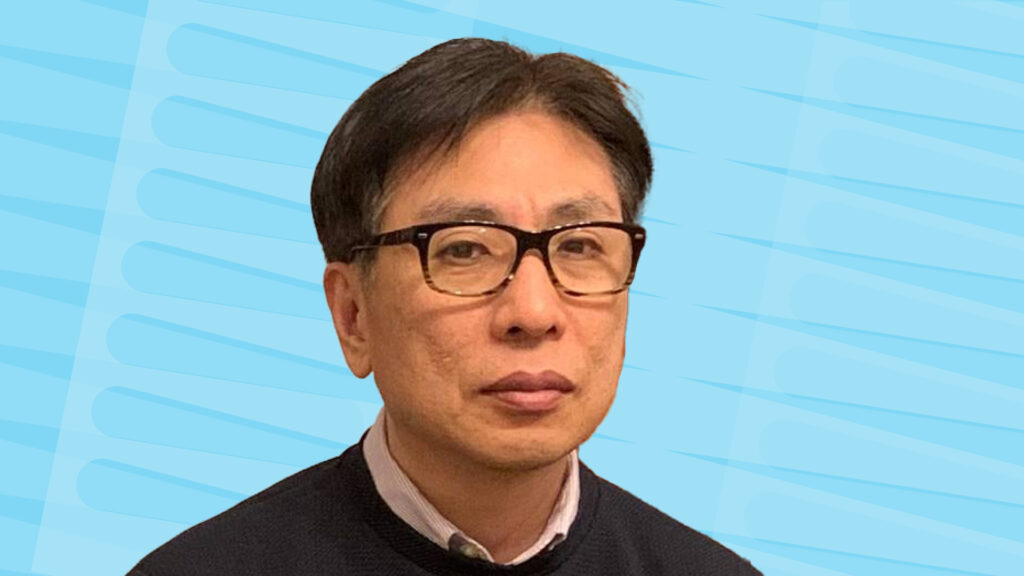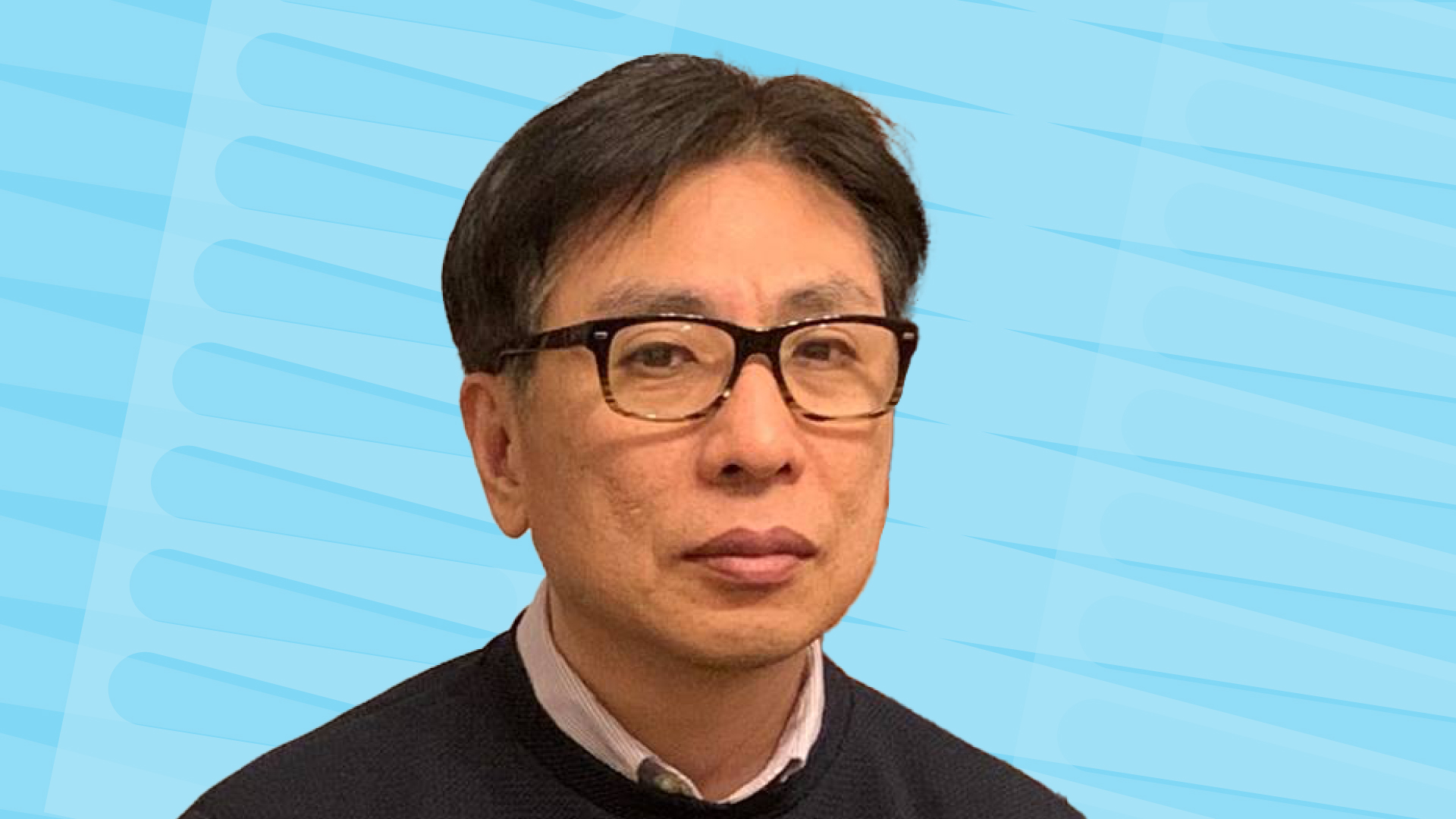
The senior director of the Center for Advanced Imaging says a world-changing solution is not something already out there. It requires extra creativity and imagination.
Dr. Namwoong Paik is the senior director of the Center for Advanced Imaging at SRI International. With a Ph.D. in physics and an understanding of complex subjects such as semiconductors and unified field theory, Dr. Paik is an asset to SRI’s Integrated Systems and Solutions (InSys) division. Dr. Paik and his team focus on cutting-edge solutions and are given the freedom at SRI to continuously push the boundaries of innovation.
Plasma physics, unified theory, and semiconductors
Dr. Paik is a practically minded person who has deep knowledge of theoretical physics. As part of his master’s degree research, he began putting theory to work in the field of semiconductors. Switching gears after his master’s, Paik focused on the more practical side of physics, completing his Ph.D. thesis in what Paik describes as “crazy unified field theory.” The thesis work combined his specialties in plasma physics and semiconductors. It also propelled the start of his first company which was quickly acquired by Plasmion Corporation. This start-up developed the Plasma Display Panel (PDP), atmospheric plasma technology and negative ion beam technology, which was the focus of his Ph.D. thesis.
Paik went on to join Philips Semiconductor, where he was involved in the development of automotive chips such as air bag sensors, as well as chips for cell phones. One of the areas he made progress in was power-management of the iPhone-battery though a semiconductor chip. Dr. Paik explained, “at the time, the battery had a major impact on the phone’s design as the battery could not be easily replaced. That was one of the key components for the early version of iPhone development. Our group developed and fabricated these essential components for iPhones, which was a lot of fun. However, by nature, a semiconductor device is eventually overtaken; it’s all about delivering the design at a lower cost and cost-cutting across the board: that job was high volume, very busy and involved a lot of logistics.”
Ultimately, the fast turnaround and financial-centric nature of commercial products were stifling his creativity. Dr. Paik was looking for a role that allowed his creative mind to flourish and that drove his urge to develop groundbreaking solutions. That was when Dr. Paik discovered SRI International.
A perfect match: SRI and Dr. Paik
At SRI, Dr. Paik has been able to realize his dreams. Alongside his team, comprised of nearly 50 people, Dr. Paik has worked on multiple projects including night vision technology, LIDAR technology and space imaging. SRI’s Center for Advanced Imaging is heavily involved in space systems and space sensors, including imaging sensors for U.S. space programs. Dr. Paik proudly added, “some of our sensors are orbiting the earth and taking pictures during storms; some of the sensors are traveling with the spaceships going into the solar orbit.”
Some of the projects Dr. Paik and his team have been working on include:
· The IVAS® program (Integrated Visual Augmentation System), which is intended to improve soldiers’ situational awareness and mobility. Paik and his team delivered on the imaging components.
· The Parker Solar Probe.
· Development of the imager that will be sent to Europa, one of Jupiter’s moons.
· LIDAR (light detection and ranging), which is used in 3D imaging.
One of the new and exciting projects that Dr. Paik and his team are currently involved in is the day and night vision project. “Human beings cannot see well at night, but nocturnal animals, such as a dog, have good night vision,” comments Dr. Paik. “SRI is working on developing a device that gives soldiers the ability to move seamlessly from day to night vision.”
Predicting the future using real-time imaging
Dr. Paik and his team are working on the next-generation CMOS image sensor technologies, widely used in cellphones, to help us make informed decisions. Phones typically contain seven or eight cameras, which have the potential to capture substantial data. Paik has a vision of the future of imaging, which will be “smarter, multifunctional and advanced features such as 3D depth-sensing.”
The practical reality of this is in applications that help predict near-time future events, such as in autonomous cars: Paik explains, “for example, measuring the distance of a car coming towards you; you have to see if the car is going to hit you or not.” Paik continued to explain some of the other applications of real-time monitoring: “Imagine using a sensor to predict the future. Image sensors that can monitor an individual’s movements. For example, sensor data can help determine if an individual is sleepy and/or about to fall asleep. The camera would check body position, eye movement and so on. The data can then be analyzed to take action.”
Dr. Paik explained how a premise such as real-time imaging and data is connected in terms of autonomous driving experiences. A sleepy driver, caught by analyzing imaging data, could be prevented from falling asleep by the autonomous car reacting to the data, turning on air conditioning and perhaps alerting the driver through voice, and so on.
A creative team under a creative wing
Dr. Paik is proud of the team that has been built over the last 15+ years. He explained that many of the people have been at the company for two or three decades. Dr. Paik said, “if a workplace is not motivating or interesting things aren’t happening, then people don’t stay more than a few years.” SRI is in a great position. We can capitalize on a great team ethos with team members that have exceptional skills.”
Dr. Paik spoke of his team’s unmatched creativity and their strong combination of knowledge and experience. He emphasized that this combination allows his team to develop the ultimate innovation for our customers, creating better solutions than competitors.



